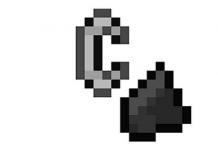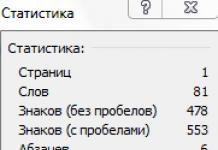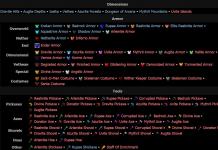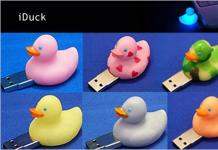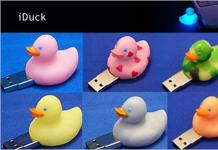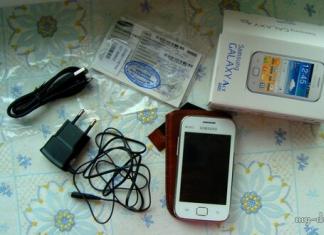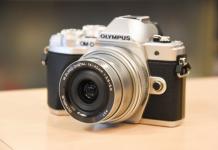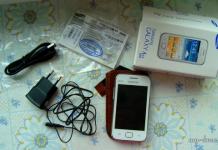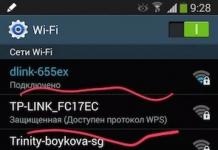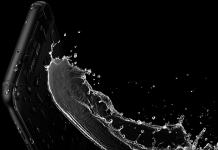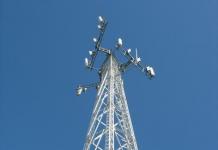Hi all!
They brought a Lenovo a7600-h tablet for repair with a problem of slow charging (450ma). Inspection revealed that the connector with the tracks had been torn out. The connector was soldered, but the master restored only contact + and ground, and data+ and data - were not used. It was because of this that the tablet charged slowly, because it thought that it was connected to the USB connector of the PC.
First of all, I soldered data+ and data - (threw the wires), fortunately the contacts were on the other side, but the computer did not react to this in any way, and charging continued at a low current.
Well, okay, the connection with the PC is not the most important thing at the moment, but charging needs to be addressed.
To solve this problem, I used a charging board on the tp4056.
In general, there is nothing complicated - you need to connect the charging module in parallel with the tablet charging system. Thus, the charging current will increase (1 ampere + tablet charging current), and the charge indication will work (but if the tablet does not respond to charging, then the tablet will not show the charging process)
First of all, I disassembled the tablet and found a place where there is a +5 from the connector. I didn’t have to search for long - there are spots on the back side. On other tablets they may not be there, you can solder a resistor/diode to the connector itself, it doesn’t matter - the main thing is the presence of +5 volts.
Well, I soldered the wire to the positive terminal of the battery. 
I found a place to install the module in a free place, and ground off the plastic there. 
I soldered the wires to the scarf. The mass can be taken from any place (from a metal screen on the board, for example). I didn’t have it nearby - I soldered it to the battery case, and on the other hand I soldered it to the ground on the board, because I wasn’t sure of good contact.
Connection diagram 
I installed it in place and got in. By the way, the microUSB connector was removed from the board. 
Check - charging is in progress, the charging current has increased. 
But then a problem emerged - the case does not close! Although I should...
It was possible, of course, to file the board, but there was only one option left, namely, to use the chip itself, without a board.
I soldered a microcircuit and a 1.2 kOhm resistor from the board. By the way, if you need a lower charge current, then by selecting the nominal value you can change it 
The connection diagram is very simple 
I soldered everything, for heat removal I used a piece of metal from the PC case (plug), through thermal chewing gum. 
I insulated it with Kapton tape, closed the lid of the tablet, now everything is fine, there is enough space.
I connected the discharged tablet. Charging current was 1.45A, as expected 

The tablet is charged normally, the % indication is displayed correctly.
In terms of heating of the microcircuit, it is hot, but within normal limits. I don’t think it will burn out; after all, the heat sink is better than PCB.
Here is another use of TP4056)
Of course, this is not a repair, but a “crutch,” but it is cheaper and faster than looking for a fault on the board and repairing it.
Thank you all for your attention!
I'm planning to buy +48 Add to favorites I liked the review +84 +151I welcome everyone who stopped by. The review will focus, as you probably already guessed, on one interesting modification of the “people's” charging module TP4056 for a current of 3A and small use as a homemade charger for lithium. There will be a little testing and a simple example of making a charger from cheap components, so if anyone is interested, you are welcome under the cat.
So, here is the same modification of the “folk” scarf:
Application of this board:
- Charging Li-Ion batteries built into the end device. A common case is that the device has several parallel cans and 1A is too small. Well, judge for yourself, there are two or three banks of 2.6-3Ah each, the total capacity is about 6-7Ah. Charging such a battery will take about 7-8 hours, and with this scarf – about 3 hours. As an example - homemade power banks, cordless screwdrivers and mini-screwdrivers
- Assembling your own “fast” charger for one or two batteries. Modern high-capacity batteries at 3300-3500mah can easily take 3-4A, and even more so two parallel banks (before charging it is better to approximately equalize the potentials). Manufacturers themselves allow some cans to be charged with a current of 3-4A, this is written in the datasheets for these cans.
- Input connector – DC Port 5mm + duplicate pins;
- Input voltage - 4.5V-5.5V
- Final charge voltage - 4.2V (Li-Ion batteries);
- Maximum charging current - 3A;
- Number of TP4056 modules - 4 (max. accelerating current 4A);
- Indication – discrete two-color LED (red/green);
- Reverse polarity protection - no;
- Dimensions - 65mm*15mm.
- Charge board 4*TP4056 3A;
- Bi-color three-legged LED (red/blue light);
- DC connector 5mm.

The scarf is delivered in a regular small package, it arrived to me in two to three weeks. Inside the package there was a kind of protection - two glued sheets of polyethylene foam, inside of which there was a scarf:

Charging board close-up:

There is nothing supernatural in the circuit design - we just took and paralleled 4 TP4056 controllers, while simultaneously reducing the maximum charging current for each controller from 1A to 750ma. At first I couldn’t understand why the maximum charging current was only 3A, since there were four controllers, but looking closer, I saw not the usual 1.2Khm SMD resistor, but a 1.6Khm one. Moreover, there is a 1.6K resistor in all arms:

Let me remind you of the table of the maximum charging current depending on the value of the current-setting resistor:

In our case, there are 1.6Kohm resistors for each controller, 750ma per arm. Therefore, the total maximum charging current is 3A. This is for the better, the scarf heats up less, and 4A is already too much. On the other hand, if you need a charging current of 4A, we change 4 resistors.
Most likely, it will not be possible to regulate the total charging current by soldering a trimmer/variable resistor, since it must be set for each controller.
In summary, for those who find it difficult or do not want to solder folk scarves themselves, this is a good solution to the problem.
Scarf sizes:
The scarf is very small, only 65mm*15mm:
Here is a comparison with the “people's” board TP4056 for 1A, 18650 battery and holder:

If necessary, you can bite off the front part of the board onto which the DC connector is soldered and solder to the 5V+ or 5V- contacts, or directly to the corresponding tracks:

This will make the length of the scarf 1 centimeter shorter. I’ve already remade a folk scarf before, and here’s what happened:

In our case, everything is incredibly simple, because the tracks on the printed circuit board do not suffer. Of course, for those who need a DC connector, we leave it or solder it through wires to the 5V+ or 5V- contacts. MicroUSB and miniUSB connectors are undesirable here; they will get very hot, because they are not designed for such currents. And there is no need for them, because most adapters have a 2.5A limit. But on the other hand, if the adapter does not turn off when overloaded, then we save on a discrete power supply, and the current will be slightly less. Therefore, it's up to you...
Testing 4*TP4056 3A board:
Now let's test the scarf. Does it really charge 3A? To do this, we will be helped by an ampere-voltmeter, which often appears in my reviews (measuring the charge current) and the usual multimeter (measuring the voltage on the battery). As a power source – switching power supply unit S-30-5 at 5V/6A:
As you can see, the charge actually flows with a constant current of 3A (CC phase), until the voltage on the bank exceeds 3.9V-3.95V, then it begins to gradually decrease (CV phase begins). As soon as the voltage on the bank is 4.2V, the LED color changes to green, indicating that the charge is complete. Although due to inertia the current still continues to flow:

After this, for another 10-15 minutes the current decreases, while the voltage on the battery is 4.21V. As soon as the current drops to 150mA, the controller completely turns off the charge, and the voltage on the bank drops to 4.2V.
The module charged an almost “squeezed out” Sanyo UR18650ZY 2600mah can in 75-80 minutes. Well, just great!
A small example of assembling your own 3A charger:
As an example, I will give an example of building my own charger from proven inexpensive components. What we need for this:1) The board itself being reviewed is TP4056*:


You need copper, not copper-plated. It is easy to determine - we clean it with a knife and if the veins begin to shine and do not tin, it means that the wire is copper-plated (aluminum coated with copper). I recommend either a high-quality acoustic one or household ones, such as SHVVP.
5) Power supply unit (PSU) 5V 5-6A (with reserve). I used PSU S-30-5 at 5V/6A*:

You can use the commonly found 12V 2-3A power supply, which comes with various devices, and a 5A DC-DC step-down converter (they hold 3A stably). But there are a couple of disadvantages here, because the circuit becomes more complicated and the cost of the charger increases. Therefore, if there is no suitable power supply available, then we use the computer’s power supply. An additional load of 15W is not scary for him, unless, of course, he is already working at the limit of his capabilities. If there is a free Molex connector available, then attaching an adapter to it will not be difficult. In this case, we need red (+) and black (-) wires.
So, we figured out the components. Now the assembly itself:
Since the scarf will be used in another device and I already have good high-current chargers, I don’t need homemade charging, so the assembly, as they say, is a breeze (I won’t solder the connectors):
We take the battery holder and cut out the plastic at the ends for the wire (bottom groove in the photo):




Then we solder the power wires with or without connectors, depending on which option you chose. We bend the three-legged LED at our discretion, but in order not to shorten its leads, we stretch insulation from any wire over them:

We cover the board with a plastic cover from the cable channel or a similar casing and wrap it with the well-known electrical tape :-). It turns out quite handicraft, but the main thing is that it works:

Control check, everything works:

I did not solder the connectors, but connected them directly to the power supply. I recommend soldering an appropriate connector that can withstand a long-term flow of 3A current. That's all for me...
Pros:
- Reliable, years-tested element base;
- High charge current;
- Possibility of increasing the charging current up to 4A by replacing current-setting resistors;
- Small size;
- Easy to install and operate.
- The price is too high;
- The scarf is not intended for charging sequential assemblies (2S, 3S, 4S and more cannot);
- Requires external power;
- Afraid of polarity reversal;
- Some inhibition of the last phase of charge (CV).
Conclusion: useful modification
Assessing the characteristics of a particular charger is difficult without understanding how an exemplary charge of a li-ion battery should actually proceed. Therefore, before moving directly to the diagrams, let's remember a little theory.
What are lithium batteries?
Depending on what material the positive electrode of a lithium battery is made of, there are several varieties:
- with lithium cobaltate cathode;
- with a cathode based on lithiated iron phosphate;
- based on nickel-cobalt-aluminium;
- based on nickel-cobalt-manganese.
All of these batteries have their own characteristics, but since these nuances are not of fundamental importance for the general consumer, they will not be considered in this article.
Also, all li-ion batteries are produced in various sizes and form factors. They can be either cased (for example, the popular 18650 today) or laminated or prismatic (gel-polymer batteries). The latter are hermetically sealed bags made of a special film, which contain electrodes and electrode mass.
The most common sizes of li-ion batteries are shown in the table below (all of them have a nominal voltage of 3.7 volts):
| Designation | Standard size | Similar size |
|---|---|---|
| XXYY0, Where XX- indication of diameter in mm, YY- length value in mm, 0 - reflects the design in the form of a cylinder |
10180 | 2/5 AAA |
| 10220 | 1/2 AAA (Ø corresponds to AAA, but half the length) | |
| 10280 | ||
| 10430 | AAA | |
| 10440 | AAA | |
| 14250 | 1/2 AA | |
| 14270 | Ø AA, length CR2 | |
| 14430 | Ø 14 mm (same as AA), but shorter length | |
| 14500 | AA | |
| 14670 | ||
| 15266, 15270 | CR2 | |
| 16340 | CR123 | |
| 17500 | 150S/300S | |
| 17670 | 2xCR123 (or 168S/600S) | |
| 18350 | ||
| 18490 | ||
| 18500 | 2xCR123 (or 150A/300P) | |
| 18650 | 2xCR123 (or 168A/600P) | |
| 18700 | ||
| 22650 | ||
| 25500 | ||
| 26500 | WITH | |
| 26650 | ||
| 32650 | ||
| 33600 | D | |
| 42120 |
Internal electrochemical processes proceed in the same way and do not depend on the form factor and design of the battery, so everything said below applies equally to all lithium batteries.
How to properly charge lithium-ion batteries
The most correct way to charge lithium batteries is to charge in two stages. This is the method Sony uses in all of its chargers. Despite a more complex charge controller, this ensures a more complete charge of li-ion batteries without reducing their service life.
Here we are talking about a two-stage charge profile for lithium batteries, abbreviated as CC/CV (constant current, constant voltage). There are also options with pulse and step currents, but they are not discussed in this article. You can read more about charging with pulsed current.
So, let's look at both stages of charging in more detail.
1. At the first stage A constant charging current must be ensured. The current value is 0.2-0.5C. For accelerated charging, it is allowed to increase the current to 0.5-1.0C (where C is the battery capacity).
For example, for a battery with a capacity of 3000 mAh, the nominal charge current at the first stage is 600-1500 mA, and the accelerated charge current can be in the range of 1.5-3A.
To ensure a constant charging current of a given value, the charger circuit must be able to increase the voltage at the battery terminals. In fact, at the first stage the charger works as a classic current stabilizer.
Important: If you plan to charge batteries with a built-in protection board (PCB), then when designing the charger circuit you need to make sure that the open circuit voltage of the circuit can never exceed 6-7 volts. Otherwise, the protection board may be damaged.
At the moment when the voltage on the battery rises to 4.2 volts, the battery will gain approximately 70-80% of its capacity (the specific capacity value will depend on the charging current: with accelerated charging it will be a little less, with a nominal charge - a little more). This moment marks the end of the first stage of charging and serves as a signal for the transition to the second (and final) stage.
2. Second charge stage- this is charging the battery with a constant voltage, but a gradually decreasing (falling) current.
At this stage, the charger maintains a voltage of 4.15-4.25 volts on the battery and controls the current value.
As the capacity increases, the charging current will decrease. As soon as its value decreases to 0.05-0.01C, the charging process is considered complete.
An important nuance of the correct charger operation is its complete disconnection from the battery after charging is complete. This is due to the fact that for lithium batteries it is extremely undesirable for them to remain under high voltage for a long time, which is usually provided by the charger (i.e. 4.18-4.24 volts). This leads to accelerated degradation of the chemical composition of the battery and, as a consequence, a decrease in its capacity. Long-term stay means tens of hours or more.
During the second stage of charging, the battery manages to gain approximately 0.1-0.15 more of its capacity. The total battery charge thus reaches 90-95%, which is an excellent indicator.
We looked at two main stages of charging. However, coverage of the issue of charging lithium batteries would be incomplete if another charging stage were not mentioned - the so-called. precharge.
Preliminary charge stage (precharge)- this stage is used only for deeply discharged batteries (below 2.5 V) to bring them to normal operating mode.
At this stage, the charge is provided with a reduced constant current until the battery voltage reaches 2.8 V.
The preliminary stage is necessary to prevent swelling and depressurization (or even explosion with fire) of damaged batteries that have, for example, an internal short circuit between the electrodes. If a large charge current is immediately passed through such a battery, this will inevitably lead to its heating, and then it depends.
Another benefit of precharging is pre-heating the battery, which is important when charging at low ambient temperatures (in an unheated room during the cold season).
Intelligent charging should be able to monitor the voltage on the battery during the preliminary charging stage and, if the voltage does not rise for a long time, draw a conclusion that the battery is faulty.
All stages of charging a lithium-ion battery (including the pre-charge stage) are schematically depicted in this graph: 
Exceeding the rated charging voltage by 0.15V can reduce the battery life by half. Lowering the charge voltage by 0.1 volt reduces the capacity of a charged battery by about 10%, but significantly extends its service life. The voltage of a fully charged battery after removing it from the charger is 4.1-4.15 volts.
Let me summarize the above and outline the main points:
1. What current should I use to charge a li-ion battery (for example, 18650 or any other)?
The current will depend on how quickly you would like to charge it and can range from 0.2C to 1C.
For example, for a battery size 18650 with a capacity of 3400 mAh, the minimum charge current is 680 mA, and the maximum is 3400 mA.
2. How long does it take to charge, for example, the same 18650 batteries?
The charging time directly depends on the charging current and is calculated using the formula:
T = C / I charge.
For example, the charging time of our 3400 mAh battery with a current of 1A will be about 3.5 hours.
3. How to properly charge a lithium polymer battery?
All lithium batteries charge the same way. It doesn't matter whether it is lithium polymer or lithium ion. For us, consumers, there is no difference.
What is a protection board?
The protection board (or PCB - power control board) is designed to protect against short circuit, overcharge and overdischarge of the lithium battery. As a rule, overheating protection is also built into the protection modules.
For safety reasons, it is prohibited to use lithium batteries in household appliances unless they have a built-in protection board. That's why all cell phone batteries always have a PCB board. The battery output terminals are located directly on the board: 
These boards use a six-legged charge controller on a specialized device (JW01, JW11, K091, G2J, G3J, S8210, S8261, NE57600 and other analogues). The task of this controller is to disconnect the battery from the load when the battery is completely discharged and disconnect the battery from charging when it reaches 4.25V.
Here, for example, is a diagram of the BP-6M battery protection board that was supplied with old Nokia phones: 
If we talk about 18650, they can be produced either with or without a protection board. The protection module is located near the negative terminal of the battery. 

The board increases the length of the battery by 2-3 mm. 
Batteries without a PCB module are usually included in batteries that come with their own protection circuits.
Any battery with protection can easily turn into a battery without protection; you just need to gut it. 
Today, the maximum capacity of the 18650 battery is 3400 mAh. Batteries with protection must have a corresponding designation on the case ("Protected"). 
Do not confuse the PCB board with the PCM module (PCM - power charge module). If the former serve only the purpose of protecting the battery, then the latter are designed to control the charging process - they limit the charge current at a given level, control the temperature and, in general, ensure the entire process. The PCM board is what we call a charge controller.
I hope now there are no questions left, how to charge an 18650 battery or any other lithium battery? Then we move on to a small selection of ready-made circuit solutions for chargers (the same charge controllers).
Charging schemes for li-ion batteries
All circuits are suitable for charging any lithium battery; all that remains is to decide on the charging current and the element base.
LM317
Diagram of a simple charger based on the LM317 chip with a charge indicator: 
The circuit is the simplest, the whole setup comes down to setting the output voltage to 4.2 volts using trimming resistor R8 (without a connected battery!) and setting the charging current by selecting resistors R4, R6. The power of resistor R1 is at least 1 Watt.
As soon as the LED goes out, the charging process can be considered completed (the charging current will never decrease to zero). It is not recommended to keep the battery on this charge for a long time after it is fully charged.
The lm317 microcircuit is widely used in various voltage and current stabilizers (depending on the connection circuit). Sold on every corner and generally costs a penny (you can take 10 pieces in total for 55 rubles).
LM317 comes in different housings: 
Pin assignment (pinout): 
Analogues of the LM317 chip are: GL317, SG31, SG317, UC317T, ECG1900, LM31MDT, SP900, KR142EN12, KR1157EN1 (the last two are domestically produced).
The charging current can be increased to 3A if you take LM350 instead of LM317. It will, however, be more expensive - 11 rub/piece.
The printed circuit board and circuit assembly are shown below: 

The old Soviet transistor KT361 can be replaced with a similar pnp transistor (for example, KT3107, KT3108 or bourgeois 2N5086, 2SA733, BC308A). It can be removed altogether if the charge indicator is not needed.
Disadvantage of the circuit: the supply voltage must be in the range of 8-12V. This is due to the fact that for normal operation of the LM317 chip, the difference between the battery voltage and the supply voltage must be at least 4.25 Volts. Thus, it will not be possible to power it from the USB port.
MAX1555 or MAX1551
MAX1551/MAX1555 are specialized chargers for Li+ batteries, capable of operating from USB or from a separate power adapter (for example, a phone charger).
 The only difference between these microcircuits is that MAX1555 produces a signal to indicate the charging process, and MAX1551 produces a signal that the power is on. Those. 1555 is still preferable in most cases, so 1551 is now difficult to find on sale.
The only difference between these microcircuits is that MAX1555 produces a signal to indicate the charging process, and MAX1551 produces a signal that the power is on. Those. 1555 is still preferable in most cases, so 1551 is now difficult to find on sale.
A detailed description of these microcircuits from the manufacturer is.
The maximum input voltage from the DC adapter is 7 V, when powered by USB - 6 V. When the supply voltage drops to 3.52 V, the microcircuit turns off and charging stops.
The microcircuit itself detects at which input the supply voltage is present and connects to it. If the power is supplied via the USB bus, then the maximum charging current is limited to 100 mA - this allows you to plug the charger into the USB port of any computer without fear of burning the south bridge.
When powered by a separate power supply, the typical charging current is 280 mA.
The chips have built-in overheating protection. But even in this case, the circuit continues to operate, reducing the charge current by 17 mA for each degree above 110 ° C.
There is a pre-charge function (see above): as long as the battery voltage is below 3V, the microcircuit limits the charge current to 40 mA.
The microcircuit has 5 pins. Here is a typical connection diagram: 
If there is a guarantee that the voltage at the output of your adapter cannot under any circumstances exceed 7 volts, then you can do without the 7805 stabilizer.
The USB charging option can be assembled, for example, on this one. 
The microcircuit does not require either external diodes or external transistors. In general, of course, gorgeous little things! Only they are too small and inconvenient to solder. And they are also expensive ().
LP2951
The LP2951 stabilizer is manufactured by National Semiconductors (). It provides the implementation of a built-in current limiting function and allows you to generate a stable charge voltage level for a lithium-ion battery at the output of the circuit.
The charge voltage is 4.08 - 4.26 volts and is set by resistor R3 when the battery is disconnected. The voltage is kept very precisely.
The charge current is 150 - 300mA, this value is limited by the internal circuits of the LP2951 chip (depending on the manufacturer).
Use the diode with a small reverse current. For example, it can be any of the 1N400X series that you can purchase. The diode is used as a blocking diode to prevent reverse current from the battery into the LP2951 chip when the input voltage is turned off. 
This charger produces a fairly low charging current, so any 18650 battery can charge overnight.
The microcircuit can be purchased at DIP package, and in the body SOIC(cost about 10 rubles per piece).
MCP73831
The chip allows you to create the right chargers, and it’s also cheaper than the much-hyped MAX1555. 
A typical connection diagram is taken from: 
An important advantage of the circuit is the absence of low-resistance powerful resistors that limit the charge current. Here the current is set by a resistor connected to the 5th pin of the microcircuit. Its resistance should be in the range of 2-10 kOhm.
The assembled charger looks like this: 
The microcircuit heats up quite well during operation, but this does not seem to bother it. It fulfills its function.
Here is another version of a printed circuit board with an SMD LED and a micro-USB connector: 
LTC4054 (STC4054)
Very simple scheme, great option! Allows charging with current up to 800 mA (see). True, it tends to get very hot, but in this case the built-in overheating protection reduces the current. 
The circuit can be significantly simplified by throwing out one or even both LEDs with a transistor. Then it will look like this (you must admit, it couldn’t be simpler: a couple of resistors and one condenser): 
One of the printed circuit board options is available at . The board is designed for elements of standard size 0805.
I=1000/R. You shouldn’t set a high current right away; first see how hot the microcircuit gets. For my purposes, I took a 2.7 kOhm resistor, and the charge current turned out to be about 360 mA.
It is unlikely that it will be possible to adapt a radiator to this microcircuit, and it is not a fact that it will be effective due to the high thermal resistance of the crystal-case junction. The manufacturer recommends making the heat sink “through the leads” - making the traces as thick as possible and leaving the foil under the chip body. In general, the more “earth” foil left, the better.
By the way, most of the heat is dissipated through the 3rd leg, so you can make this trace very wide and thick (fill it with excess solder). 
The LTC4054 chip package may be labeled LTH7 or LTADY.
LTH7 differs from LTADY in that the first can lift a very low battery (on which the voltage is less than 2.9 volts), while the second cannot (you need to swing it separately).
The chip turned out to be very successful, so it has a bunch of analogues: STC4054, MCP73831, TB4054, QX4054, TP4054, SGM4054, ACE4054, LP4054, U4054, BL4054, WPM4054, IT4504, Y1880, PT6102, PT6181, VS6102 , HX6001, LC6000, LN5060, CX9058, EC49016, CYT5026, Q7051. Before using any of the analogues, check the datasheets.
TP4056
The microcircuit is made in a SOP-8 housing (see), it has a metal heat sink on its belly that is not connected to the contacts, which allows for more efficient heat removal. Allows you to charge the battery with a current of up to 1A (the current depends on the current-setting resistor). 
The connection diagram requires the bare minimum of hanging elements: 
The circuit implements the classical charging process - first charging with a constant current, then with a constant voltage and a falling current. Everything is scientific. If you look at charging step by step, you can distinguish several stages:
- Monitoring the voltage of the connected battery (this happens all the time).
- Precharge phase (if the battery is discharged below 2.9 V). Charge with a current of 1/10 from the one programmed by the resistor R prog (100 mA at R prog = 1.2 kOhm) to a level of 2.9 V.
- Charging with a maximum constant current (1000 mA at R prog = 1.2 kOhm);
- When the battery reaches 4.2 V, the voltage on the battery is fixed at this level. A gradual decrease in the charging current begins.
- When the current reaches 1/10 of the one programmed by the resistor R prog (100 mA at R prog = 1.2 kOhm), the charger turns off.
- After charging is complete, the controller continues monitoring the battery voltage (see point 1). The current consumed by the monitoring circuit is 2-3 µA. After the voltage drops to 4.0V, charging starts again. And so on in a circle.
The charge current (in amperes) is calculated by the formula I=1200/R prog. The permissible maximum is 1000 mA.
A real charging test with a 3400 mAh 18650 battery is shown in the graph: 
The advantage of the microcircuit is that the charge current is set by just one resistor. Powerful low-resistance resistors are not required. Plus there is an indicator of the charging process, as well as an indication of the end of charging. When the battery is not connected, the indicator blinks every few seconds.
The supply voltage of the circuit should be within 4.5...8 volts. The closer to 4.5V, the better (so the chip heats up less).
The first leg is used to connect a temperature sensor built into the lithium-ion battery (usually the middle terminal of a cell phone battery). If the output voltage is below 45% or above 80% of the supply voltage, charging is suspended. If you don't need temperature control, just plant that foot on the ground.
Attention! This circuit has one significant drawback: the absence of a battery reverse polarity protection circuit. In this case, the controller is guaranteed to burn out due to exceeding the maximum current. In this case, the supply voltage of the circuit directly goes to the battery, which is very dangerous.
The signet is simple and can be done in an hour on your knee. If time is of the essence, you can order ready-made modules. Some manufacturers of ready-made modules add protection against overcurrent and overdischarge (for example, you can choose which board you need - with or without protection, and with which connector). 
You can also find ready-made boards with a contact for a temperature sensor. Or even a charging module with several parallel TP4056 chips to increase the charging current and with reverse polarity protection ( example).
LTC1734
Also a very simple scheme. The charging current is set by resistor R prog (for example, if you install a 3 kOhm resistor, the current will be 500 mA).
Microcircuits are usually marked on the case: LTRG (they can often be found in old Samsung phones). 
Any pnp transistor is suitable, the main thing is that it is designed for a given charging current.
There is no charge indicator on the indicated diagram, but on the LTC1734 it is said that pin “4” (Prog) has two functions - setting the current and monitoring the end of the battery charge. For example, a circuit with control of the end of charge using the LT1716 comparator is shown. 
The LT1716 comparator in this case can be replaced with a cheap LM358.
TL431 + transistor
It is probably difficult to come up with a circuit using more affordable components. The most difficult thing here is to find the TL431 reference voltage source. But they are so common that they are found almost everywhere (rarely does a power source do without this microcircuit). 
Well, the TIP41 transistor can be replaced with any other one with a suitable collector current. Even the old Soviet KT819, KT805 (or less powerful KT815, KT817) will do.
Setting up the circuit comes down to setting the output voltage (without a battery!!!) using a trim resistor at 4.2 volts. Resistor R1 sets the maximum value of the charging current.
This circuit fully implements the two-stage process of charging lithium batteries - first charging with direct current, then moving to the voltage stabilization phase and smoothly reducing the current to almost zero. The only drawback is the poor repeatability of the circuit (it is capricious in setup and demanding on the components used).
MCP73812
There is another undeservedly neglected microcircuit from Microchip - MCP73812 (see). Based on it, a very budget charging option is obtained (and inexpensive!). The whole body kit is just one resistor!
By the way, the microcircuit is made in a solder-friendly package - SOT23-5. 
The only negative is that it gets very hot and there is no charge indication. It also somehow doesn’t work very reliably if you have a low-power power source (which causes a voltage drop). 
In general, if the charge indication is not important for you, and a current of 500 mA suits you, then the MCP73812 is a very good option.
NCP1835
A fully integrated solution is offered - NCP1835B, providing high stability of the charging voltage (4.2 ±0.05 V).
Perhaps the only drawback of this microcircuit is its too miniature size (DFN-10 case, size 3x3 mm). Not everyone can provide high-quality soldering of such miniature elements. 
Among the undeniable advantages I would like to note the following:
- Minimum number of body parts.
- Possibility of charging a completely discharged battery (precharge current 30 mA);
- Determining the end of charging.
- Programmable charging current - up to 1000 mA.
- Charge and error indication (capable of detecting non-chargeable batteries and signaling this).
- Protection against long-term charging (by changing the capacitance of the capacitor C t, you can set the maximum charging time from 6.6 to 784 minutes).

The cost of the microcircuit is not exactly cheap, but also not so high (~$1) that you can refuse to use it. If you are comfortable with a soldering iron, I would recommend choosing this option.
A more detailed description is in.
Can I charge a lithium-ion battery without a controller?
Yes, you can. However, this will require close control of the charging current and voltage.
In general, it will not be possible to charge a battery, for example, our 18650, without a charger. You still need to somehow limit the maximum charge current, so at least the most primitive memory will still be required.
The simplest charger for any lithium battery is a resistor connected in series with the battery: 
The resistance and power dissipation of the resistor depend on the voltage of the power source that will be used for charging.
As an example, let's calculate a resistor for a 5 Volt power supply. We will charge an 18650 battery with a capacity of 2400 mAh.
So, at the very beginning of charging, the voltage drop across the resistor will be:
U r = 5 - 2.8 = 2.2 Volts
Let's say our 5V power supply is rated for a maximum current of 1A. The circuit will consume the highest current at the very beginning of the charge, when the voltage on the battery is minimal and amounts to 2.7-2.8 Volts.
Attention: these calculations do not take into account the possibility that the battery may be very deeply discharged and the voltage on it may be much lower, even to zero.
Thus, the resistor resistance required to limit the current at the very beginning of the charge at 1 Ampere should be:
R = U / I = 2.2 / 1 = 2.2 Ohm
Resistor power dissipation:
P r = I 2 R = 1*1*2.2 = 2.2 W
At the very end of the battery charge, when the voltage on it approaches 4.2 V, the charge current will be:
I charge = (U ip - 4.2) / R = (5 - 4.2) / 2.2 = 0.3 A
That is, as we see, all values do not go beyond the permissible limits for a given battery: the initial current does not exceed the maximum permissible charging current for a given battery (2.4 A), and the final current exceeds the current at which the battery no longer gains capacity ( 0.24 A).
The main disadvantage of such charging is the need to constantly monitor the voltage on the battery. And manually turn off the charge as soon as the voltage reaches 4.2 Volts. The fact is that lithium batteries tolerate even short-term overvoltage very poorly - the electrode masses begin to quickly degrade, which inevitably leads to loss of capacity. At the same time, all the prerequisites for overheating and depressurization are created.
If your battery has a built-in protection board, which was discussed just above, then everything becomes simpler. When a certain voltage is reached on the battery, the board itself will disconnect it from the charger. However, this charging method has significant disadvantages, which we discussed in.
The protection built into the battery will not allow it to be overcharged under any circumstances. All you have to do is control the charge current so that it does not exceed the permissible values for a given battery (protection boards cannot limit the charge current, unfortunately).
Charging using a laboratory power supply
If you have a power supply with current protection (limitation), then you are saved! Such a power source is already a full-fledged charger that implements the correct charge profile, which we wrote about above (CC/CV).
 All you need to do to charge li-ion is set the power supply to 4.2 volts and set the desired current limit. And you can connect the battery.
All you need to do to charge li-ion is set the power supply to 4.2 volts and set the desired current limit. And you can connect the battery.
Initially, when the battery is still discharged, the laboratory power supply will operate in current protection mode (i.e., it will stabilize the output current at a given level). Then, when the voltage on the bank rises to the set 4.2V, the power supply will switch to voltage stabilization mode, and the current will begin to drop.
When the current drops to 0.05-0.1C, the battery can be considered fully charged.
As you can see, the laboratory power supply is an almost ideal charger! The only thing it can’t do automatically is make a decision to fully charge the battery and turn off. But this is a small thing that you shouldn’t even pay attention to.
How to charge lithium batteries?
And if we are talking about a disposable battery that is not intended for recharging, then the correct (and only correct) answer to this question is NO.
The fact is that any lithium battery (for example, the common CR2032 in the form of a flat tablet) is characterized by the presence of an internal passivating layer that covers the lithium anode. This layer prevents a chemical reaction between the anode and the electrolyte. And the supply of external current destroys the above protective layer, leading to damage to the battery.
By the way, if we talk about the non-rechargeable CR2032 battery, then the LIR2032, which is very similar to it, is already a full-fledged battery. It can and should be charged. Only its voltage is not 3, but 3.6V.
How to charge lithium batteries (be it a phone battery, 18650 or any other li-ion battery) was discussed at the beginning of the article.
Lithium batteries are being used more and more in various mobile devices and, somewhat belatedly, electronic toys. What previously received energy from 3 AA batteries can now be powered by one Li-Ion, format (or size) 18650. In fact, this is almost a copy of AA. It’s just a little more complicated than the old (nickel) type battery. We suggest using ready-made Li-Po USB charger blocks that are suitable for LiPo/LiIon cells.
They only have two LEDs - red if charging, green if fully charged. Small, convenient and cheap devices based on the TP4056 chip.

USB charger for TP4056

Most of these charge controllers have one resistor that sets the charge current, so after studying the datasheet on the microcircuit, it becomes clear how to change it within wide limits. The charge current is set by resistor R4; by default, a 1.2 kOhm resistor is soldered in, which corresponds to a charge current of approximately 1 A. We conducted experiments, and here are the values we got with other values:


Based on the obtained values, you can create a graph of current versus resistance for the TP4056 charger.

This scheme cannot be used for other types of batteries, but lithium batteries of all types work perfectly with it. We offer an excellent option: one can from the battery of an old non-working mobile phone or a laptop cell, plus this device. And now you have a capacious, stable 4 V voltage source that can replace conventional batteries in a wide variety of cases. And it will be charged from a standard 5 volt USB output. But according to the data sheet for the microcircuit, it works successfully in the input voltage range of 1-8 V.


